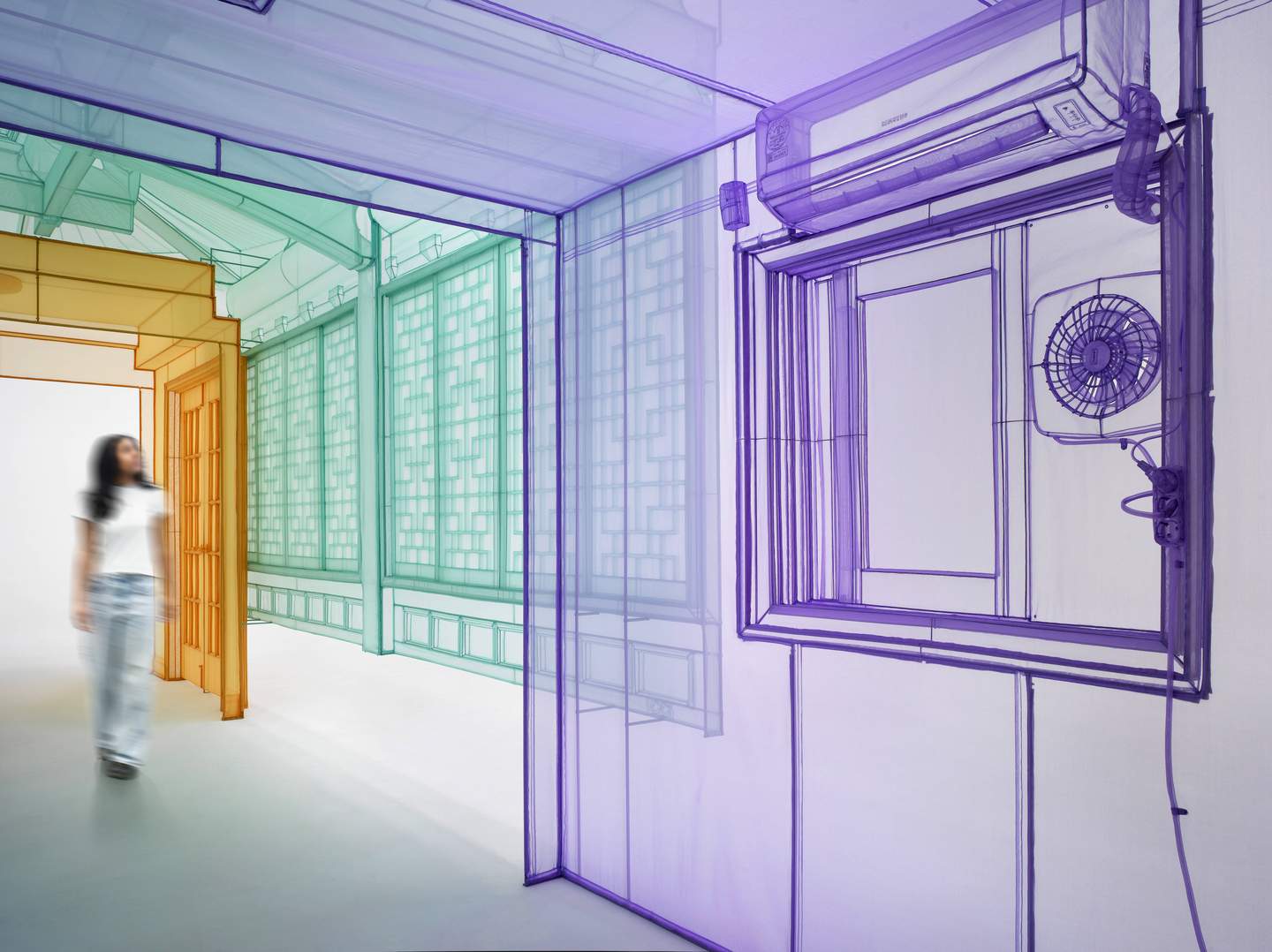Do Ho Suh Nest/s 2024 Courtesy the artist, Lehmann Maupin New York, Seoul and London, and Victoria Miro. Creation supported by Genesis. © Do Ho Suh. Photo: Jeon Taeg Su
Amidst the noise of global auctions and blue-chip hype, London’s art scene took a contemplative turn in May 2025. Exhibitions by Do Ho Suh and Claudio Parmiggiani captivated audiences, not with spectacle, but with silence. For young collectors, the growing embrace of “quiet” art offers a meaningful alternative to market-driven collecting.
Do Ho Suh: Memory in Fabric
At Tate Modern this spring, Do Ho Suh’s immersive installation Walk the House captivated audiences with its gentle grandeur. Suh, who has long been celebrated for his life-size fabric reconstructions of personal spaces, continues to explore themes of displacement, migration, and home. Born in South Korea and based in London and Seoul, Suh’s work speaks to the deeply emotional experience of living between cultures, something increasingly resonant with global audiences.
In Walk the House, visitors walked through semi-transparent replicas of rooms from Suh’s past homes, constructed entirely from delicate, hand-sewn polyester. The installation is less about literal architecture and more about memory architecture; each corridor and doorway invites the viewer into a soft, dreamlike past. Subtle details (doorknobs, hinges, power outlets) are replicated with care, underscoring the emotional weight of the everyday. The work is both deeply personal and universally relatable.
What makes Suh’s work so powerful is its use of fragility as a strength. The translucent material gives his spaces a ghostly presence, suggesting that memory, while intangible, shapes the way we inhabit the present. For younger collectors, his practice offers a compelling intersection between conceptual depth and aesthetic grace. It is both visually engaging and intellectually rich, which is a rarity in an often overstimulated art landscape.
Critically acclaimed and widely exhibited, Suh’s practice also bridges fine art and craft traditions. His labor-intensive process relies on hand-stitching and collaboration with textile artisans and adds another layer of meaning. In an age of rapid consumption, his art resists speed. It demands contemplation. And for collectors seeking longevity over trend, that’s a valuable proposition.
Claudio Parmiggiani: Silence as Substance
Meanwhile, across town at the Estorick Collection, the Italian artist Claudio Parmiggiani offered a meditative counterpoint with his retrospective, Ombra e Memoria (“Shadow and Memory”). Parmiggiani, associated with the Arte Povera movement and deeply influenced by classical philosophy, is best known for using absence as a material. His signature technique is deliberately setting objects on fire and capturing their shadows in soot and smoke on walls or panels. This process evokes a haunting visual residue of what once was.
The exhibition included several of Parmiggiani’s Delocazioni works, where shadow-imprints of books, bottles, clocks, and statues create ghostly silhouettes, reminding viewers of time’s passing and the impermanence of presence. These are not merely aesthetic exercises, they are visual meditations on mortality, history, and what it means to leave a trace. In an age obsessed with visibility and digital permanence, Parmiggiani’s art suggests another path: the power of the unseen. The Estorick show is also notable for displaying his lesser-known sculptural and text-based works.
For new collectors, Parmiggiani offers a reminder that not all impactful art announces itself. His practice encourages slow looking and philosophical engagement. It speaks to a different value system: one that prizes introspection over spectacle, subtlety over saturation. Works like his may not dominate auction headlines, but they possess a quiet magnetism that rewards deep attention.
Importantly, Parmiggiani’s market remains relatively stable and under the radar compared to more media-saturated contemporaries. For thoughtful collectors interested in European conceptual art, or those building collections around themes of memory and time, his work presents both aesthetic and curatorial opportunities.
A Counterbalance to the Market
Why is quiet art rising now? In part, it’s a counterweight to a hyper-financialized art world where bigger, louder, and more provocative often equate to higher prices. But it’s also reflective of cultural shifts. Younger collectors are increasingly drawn to art that offers emotional resonance, not just investment return.
This doesn’t mean quiet art lacks value. In fact, works by Suh and Parmiggiani are held in major museum collections and steadily appreciate in value. But they do require a different kind of engagement: one rooted in thoughtfulness, not trends.
Lessons for New Collectors
For young or emerging collectors, this trend is an invitation to slow down. Look beyond Instagram buzz. Spend time with works that grow on you. Value doesn’t always scream; sometimes, it breathes.
Collecting quiet art can be a way to build a collection that reflects not only your taste but your temperament. And as the market continues to broaden, you’ll likely find that these quieter investments hold their own, both emotionally and financially.
Sources:
- Financial Times
- Tate Modern and Estorick Collection exhibition guides
- Artforum

